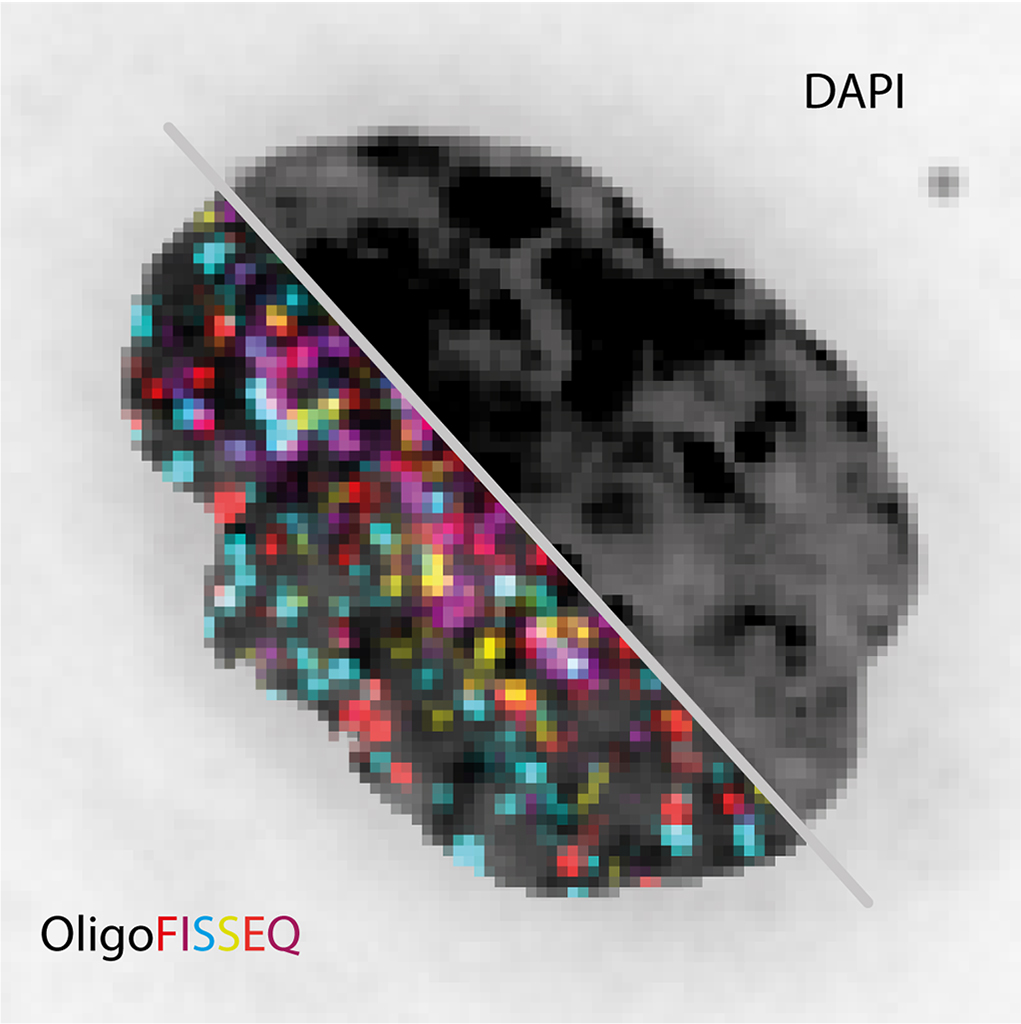Marc Martí-Renom – Centre de Regulació Genòmica (CRG)
Researchers from Harvard university, the Centro Nacional de Análisis Genómico (CNAG) and the Centre for Genomic Regulation (CRG), describe the first technology able to visualize hundreds to potentially thousands of genes at the same time under the microscope. The tech images genomes more cheaply, more quickly and increases range of visibility compared to currently available methods. The technique was described in Nature Methods. Each human cell has two metres of genome condensed down into 10 microns within the cell nucleus. This blueprint of life folds to help genes make physical contact with other genes that may be located quite a distance away along the chromosome. This three-dimensional organisation is crucial for cell function, but its complexity and constant dynamism make it incredibly difficult to visualize. Imaging more than a handful of genes at the same time has been impossible, limiting researchers’ ability to characterize how genomes function. We developed OligoFISSEQ, a technology using new computational methods that overcomes these current limitations.
